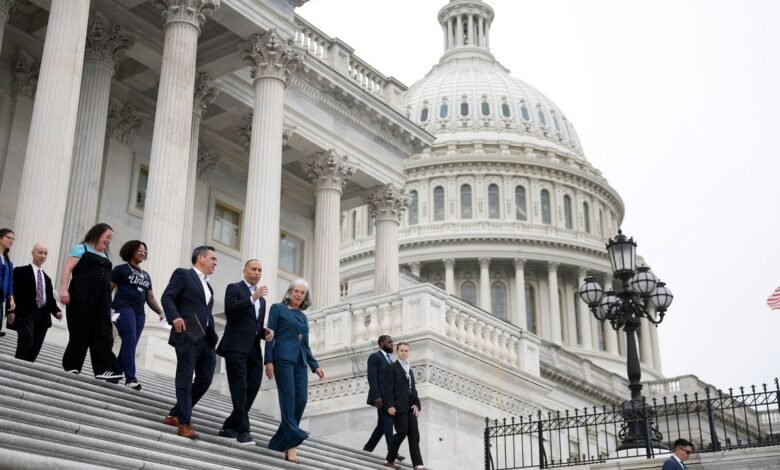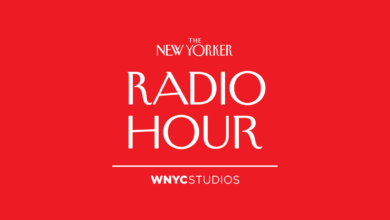Why Democrats Shut Down the Government

A few weeks ago, Ezra Klein, the influential liberal columnist at the Times, effectively called on Democrats to shut down the government, in an op-ed headlined “Stop Acting Like This Is Normal.” He looked back to March, when Chuck Schumer, the Senate Minority Leader, rallied enough votes to help keep the government open ahead of a previous funding deadline; the Democratic base howled with rage, but Schumer argued that a shutdown risked weakening checks on President Donald Trump and further empowering Elon Musk and the Department of Government Efficiency to slash through federal agencies. Klein agreed that these were reasonable positions at the time, but now, he argued, times have changed. The existing curbs on Trump’s power look weak anyway, and his Presidency has moved out of its “muzzle-velocity” stage—a blitz of actions aimed at overwhelming opponents—and into a phase of “authoritarian consolidation” that Democrats can’t in good conscience sanction. A shutdown, Klein wrote, would turn the “diffuse crisis” of Trump’s corruption into an “acute crisis” that focusses popular attention—though the Party, he conceded, would need a strong message.
According to Puck, Klein’s argument drove frenzied discussion among Democrats in Congress, not all of whom were on board. (One House Democrat said, succinctly, “Fuck Ezra.”) Most agreed, however, that there would be a shutdown this fall, be it when government funding ran out, on September 30th, or following a temporary extension to that deadline, and that the only remaining question was whether the Party’s message would highlight Trump’s constitutional abuses—a crisis that must be addressed, for some; a sop to élite Times readers, for others—or a pocketbook issue such as health care. It soon became clear that Democrats planned to go to the mat on the latter, demanding a guaranteed extension of expiring Obamacare subsidies and a reversal of cuts to Medicaid and other health programs that Republicans passed in their One Big Beautiful Bill Act this summer. They did push back on one of the aforementioned constitutional abuses, too: the Administration’s aggressive attempts to usurp congressional spending authority. Last week, Russell Vought, the chief architect of that effort, warned (or, perhaps, promised) that the Administration would use a shutdown to enact permanent cuts to the federal workforce. Democrats dismissed the threat on the somewhat contradictory ground that the Administration can’t legally follow through with it, and that it has already been firing workers anyway; Hakeem Jeffries, the House Minority Leader, called Vought a “malignant political hack,” for good measure. Trump agreed to meet with Schumer and Jeffries, then cancelled, then agreed again. The meeting, on Monday, did not yield a deal. Afterward, Trump posted a foul A.I.-generated video depicting Jeffries with a sombrero and a mustache, alongside Schumer, who could be heard, in a fake voice, promising health care to “illegal aliens” who “can’t even speak English” and thus “won’t realize we’re just a bunch of woke pieces of shit.”
By this point, the Beltway Bible Politico had proclaimed that a shutdown was “all but inevitable.” John Thune, the Senate Majority Leader, refused to budge from the position that, while Republicans would be open to discussing health care with Democrats, they would do so only with the government open; Mike Johnson, the Speaker of the House, didn’t even call the chamber back into session before the shutdown deadline. Yesterday, a vote on a Republican plan to extend funding through November peeled off a couple of senators who caucus with Democrats, but still fell five votes short of the necessary sixty-vote threshold; a Democratic counterproposal failed by a wider margin. Trump said that “a lot of good” might come from a shutdown if it allowed the government to make “irreversible” cuts to programs that Democrats like, and posted another racist video of Jeffries, this time with an A.I.-generated mariachi band of Trumps playing in the background. One minute after midnight, the government did indeed run out of funds. The end is not yet in sight.
The history of government shutdowns began in earnest in the nineteen-eighties. Even then, they were typically short and often revolved around a handful of issues. Not that there even was an issue all of the time: in 1982, the government briefly closed because lawmakers were otherwise engaged at social and fund-raising functions. In 1995, congressional Republicans, led by Newt Gingrich, triggered the first shutdown of significant length—it would go on for three weeks—over a broad spending dispute with the Clinton Administration. (Gingrich was also miffed, apparently, about having to use a rear door to disembark the flight back from the former Israeli Prime Minister Yitzhak Rabin’s funeral.) In 2013, Republicans shut down the government again, this time for a little more than two weeks, in an attempt to defund Obamacare. The longest shutdown to date—thirty-five days—came in Trump’s first term, as part of an attempt to boost funding for his border wall. (Before that, Schumer had shut down the government over the treatment of the Dreamers, but he relented after a few days, when the G.O.P. offered a separate vote.)
In each of these three major cases, the Party forcing the issue did not get what they wanted, and took the greater share of the blame among the public, too. (The separate vote on Dreamers never came to anything, either.) Over the years, several theories have emerged to explain how shutdowns are won and lost. A former Clinton aide once suggested that it’s hard for congressional opponents to beat the sitting President, given his vastly greater ability to corral attention—but then Trump managed to defeat himself in the shutdown over wall funding. (It probably didn’t help when Trump, in a televised meeting with Democratic leaders, said, “I will be the one to shut it down. I won’t blame you for it.”) Others have noted that Democrats—traditionally the “governing Party,” as my colleague Susan B. Glasser put it this week, with a deep-seated “responsibility gene”—have reliably been seen to prevail in shutdown fights. But Schumer didn’t, when it came to the Dreamers. It might simply be the case that the Party forcing the issue has a structural disadvantage. Shutdowns “don’t work,” the political scientist Matthew Glassman told the Times recently. Each time, the resistant side has demanded “a reopening of the government while pointing out all the ways the shutdown was hurting federal workers and American citizens. Eventually, the shutdown coalition cracked, the government reopened, they didn’t win their policy major objectives, and they were worse off politically going forward.”
Various liberal commentators agreed, in the wake of Klein’s essay, that a shutdown was a bad idea for Democrats. And yet, as the deadline loomed, there were also legitimate reasons to temper such defeatism. For starters, several early polls suggested that voters were primed to blame Republicans this time; the Party, after all, controls the White House and both chambers of Congress, and shutdowns do not often happen under such conditions. Although the long-term political consequences of shutdowns have been contested in the past, it’s not really clear that Republicans paid any durable price for those they triggered in 1995 and 2013; indeed, one could argue that, while both failed in a substantive sense, they helped establish a mythology—of uncompromising, base-pleasing own-the-libbery—that seems to have helped the Party in the long run. If Democrats do wind up getting most of the blame for this shutdown, will anyone really care by the time the midterms roll around, a thousand and one fresh scandals from now? Will anyone even remember?






